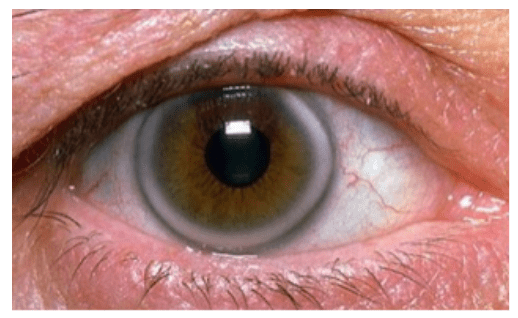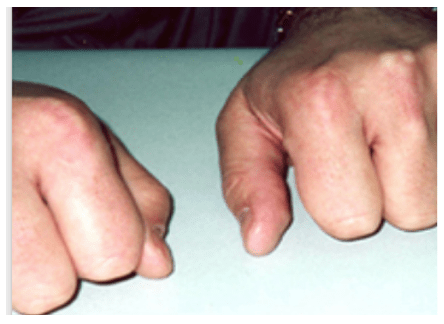Diagnosis of Hyperlipidaemia?
The diagnosis of Hyperlipidaemia is often an incidental finding from a routine screening by a patients’ General Practitioner who may be conducting a cardiovascular risk assessment. In the cases of a familial/genetic cause, this is typically part of a family referral for assessment.
There are some physical signs that may cause suspicion of high cholesterol levels, they can include:
- Premature arcus senilis – grey/white opaque found in the margins of the cornea

- Tenon xanthomata – non-tender, hard nodules commonly found on the Achilles tendon and knuckles

Blood cholesterol levels are often taken when the patient is fasting which measures the following blood levels:
- Total Cholesterol (TG),
- Triglycerides,
- Low-density lipoprotein (LDL-C), and
- High-density lipoprotein (HDL-C).
However, cholesterol/lipid levels are often used as part of a comprehensive review of a patient’s overall cardiovascular risk (CVD) using an assessment calculator. These calculators are used to identify an absolute CVD risk profile, in conjunction with other clinical considerations, to estimate the potential for a cardiovascular event such as a heart attack or stroke for each patient.
These clinical considerations may include (but are not limited to):
- Cardiovascular disease or peripheral vascular disease confirmation,
- Hypertension,
- Obesity / high body mass index (BMI),
- Diabetes mellitus,
- Age,
- Smoking status,
- Kidney function,
- Aboriginal / Torres Strait Islander ethnicity,
- Lifestyle and exercise, and
- Family history.
Both cholesterol levels and clinical considerations are then used to determine the total CVD risk dependant on all of the risk factors associated with each individual patient. These factors allow physicians to indicate what the likely risk for each patient might be in terms of the potential of cardiovascular disease or a cardiac event.
These groups are:
- Low risk with absolute CVD risk < 10%
- Moderate risk with absolute CVD risk 10-15%
- High risk with absolute CVD risk > 15%3
The acceptable range for cholesterol levels may depend on the individual risk category as determined by the patient’s individual risk profile. Below is one example of a guide of acceptable ranges, however, there are many that clinicians may use in practice:

Learn More About The Treatment Options For Hyperlipidaemia
Patient Disclaimer: All content on the Hope For Hearts site is created and published online for general information purposes only. It is not intended to be a substitute for professional medical advice and should not be relied on as health or personal advice. Please see your doctor if you have any questions or concerns.
Reference
- Hook Eye & Optical
- BMJ Journals
- Royal Australasian College of General Practitioners (RACGP)
- Med J Aus 5 Nov 2001; 175 S55-S 89. Heart, Lung and Circulation. 2005; 14: 275-291
